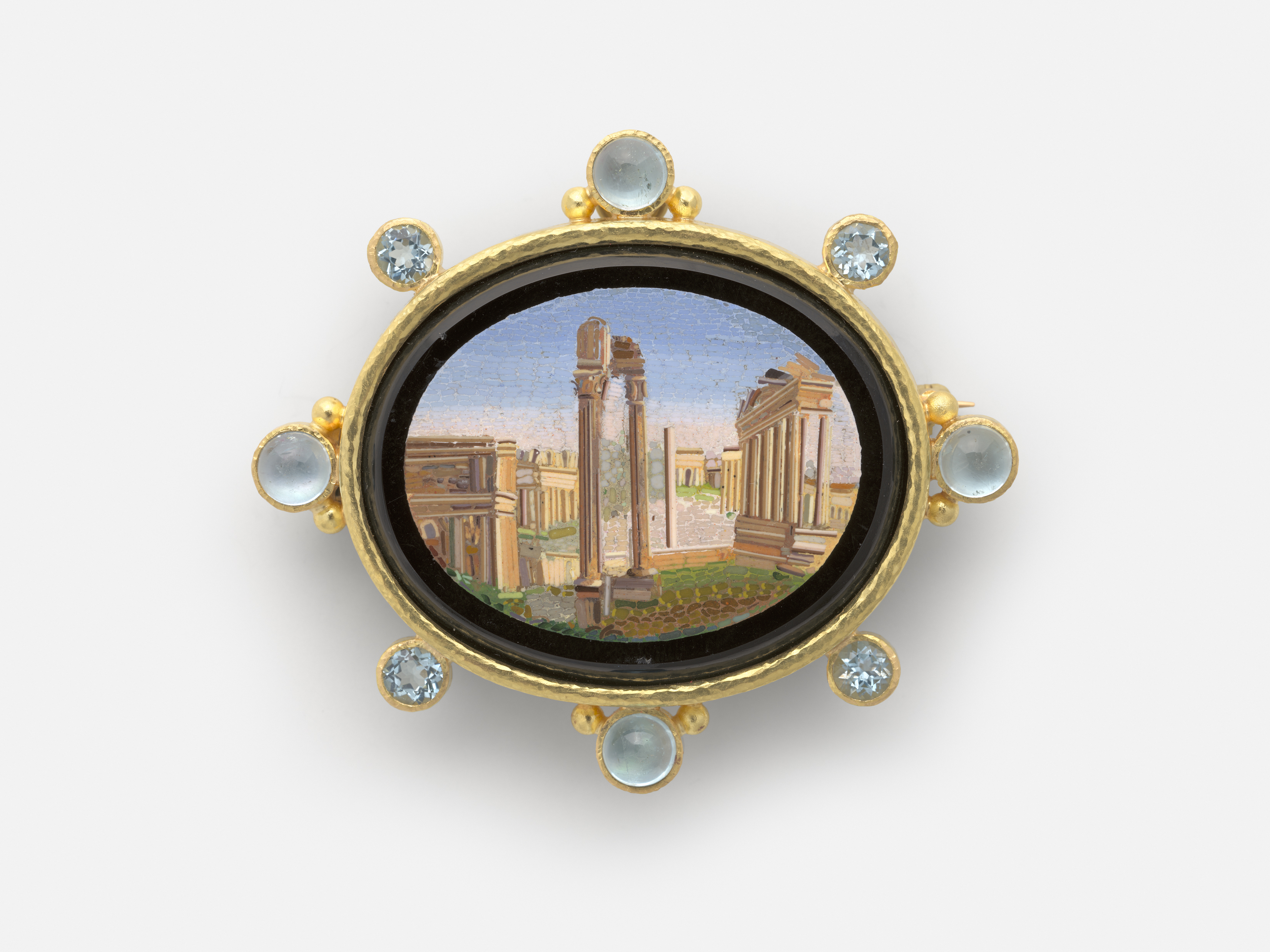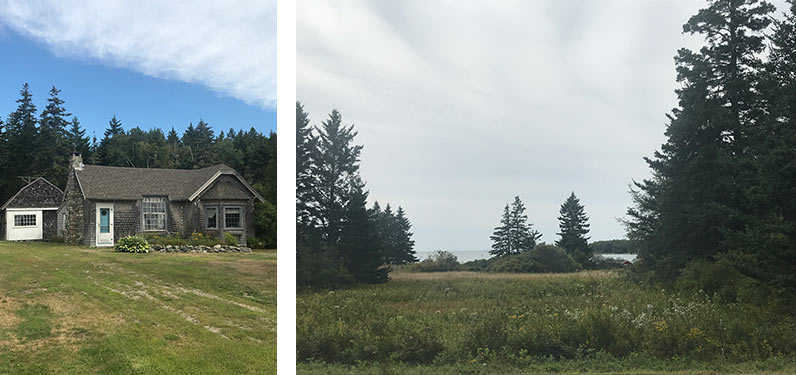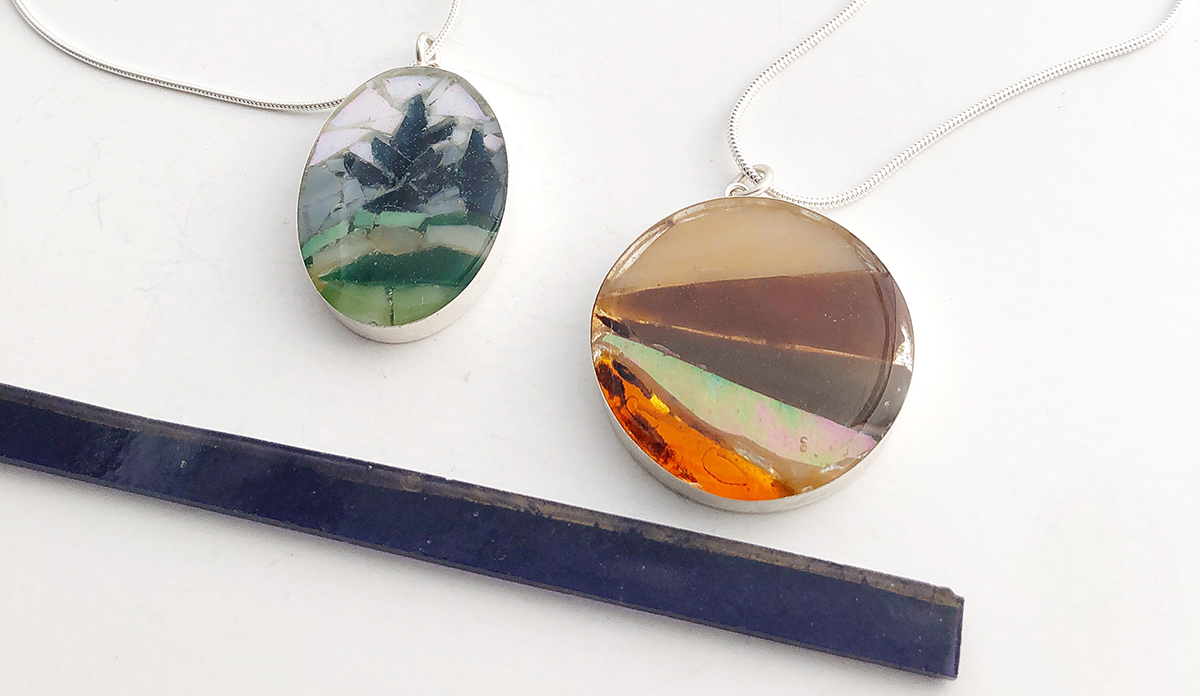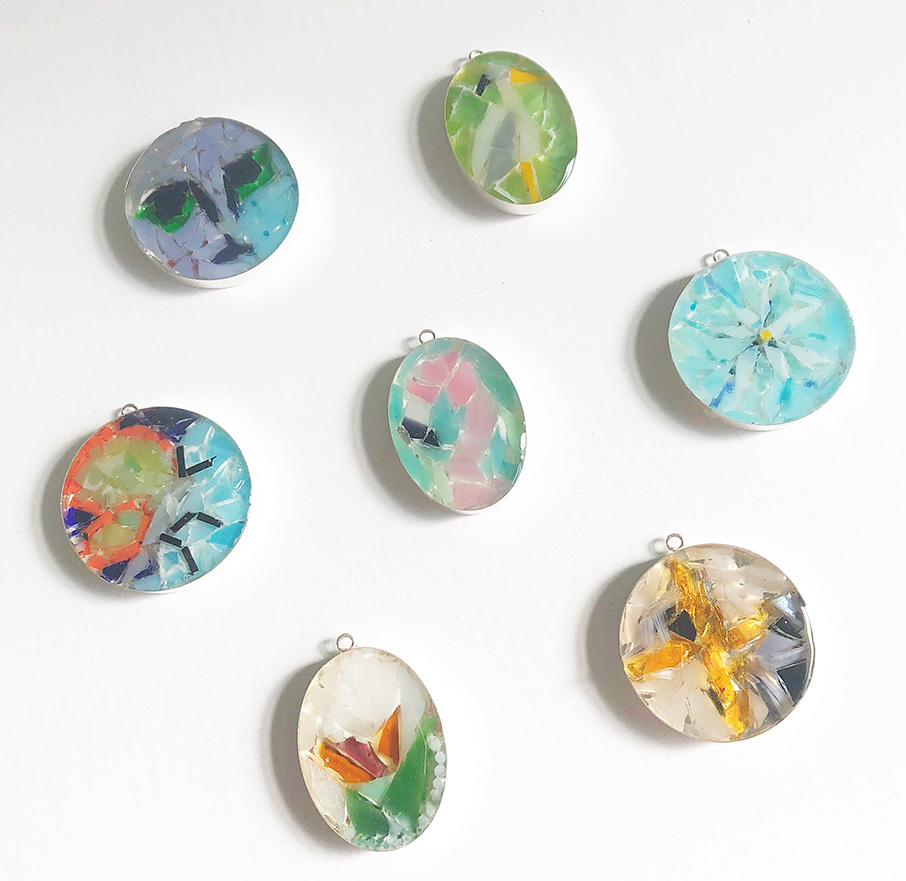When you choose to adorn your body with jewelry, you are communicating with the outside world without having to say a word. So, it is no wonder there is mysticism and fascination around these wearable wonders. Jewelry has a rich history over thousands of years in cultures throughout the world—from functional objects like brooches used to fasten clothing to the high opulence of the UK’s Crown Jewels. I have always loved studying jewelry history so I was delighted to be approached to teach a workshop in conjunction with A Return to the Grand Tour: Micromosaic Jewelry from the Collection of Elizabeth Locke. The collaborative program between the Gibbes Museum and Redux Contemporary Art Center gave me a chance to dive headfirst into the purpose, process, and history of the micromosaic technique.

When I started my research for the workshop I wanted to begin with the past. I discovered that micromosaics became popular in the nineteenth century when aristocrats traveling in Europe wanted to take home a keepsake to commemorate their trip. Many of the designs focused on architectural and historical sites, and their small size made them easy to travel with. I’m sure that they also served as great conversation starters about one’s journey once the travelers returned home from their adventures. The exhibition at the Gibbes has so many perfect examples of these small gems and as you make your way through the collection you almost feel like you spent a day sightseeing in the Vatican City and took a break to admire the Basilica while an Italian artisan replicated it in thousands of tiny tiles or tesserae. The inclusion of magnifying glasses throughout the exhibition is a wonderful and necessary addition—allowing visitors to see the hundreds of one-millimeter tiles that make up each detailed image. During the first session, Sara Arnold, the Gibbes director of curatorial affairs, led the group on a tour of the exhibition and provided great background on the topic to inspire our hands-on projects.
While researching how the process was traditionally done, I found a wonderful video from the Victoria and Albert Museum and shared it with my class after our private tour at the Gibbes. The patience, practice, and time that goes into works like these are mind-blowing. I wanted everyone to see just how painstaking the process is, but I knew that we could replicate the process in a much more approachable way. I shared some modern examples of contemporary jewelry artists that use micromosaics in their work like the Le Sibille Atelier, Kuf Taki, and Lori Greenburg which I had so much fun exploring. I was so impressed by their contemporary take on a historical technique and it was a great way to lean into the designing phase of this session. Lastly, I shared the samples that I made for the class and since miocromosaics were originally made to commemorate trips, I used a picture from a vacation to Maine where I got to visit the house where my namesake and great-great-grandmother lived.


The second session was held at Redux Art Center, where I work full time from my studio, and where the participants could make a micromosaic of their own. Sourcing the materials for this workshop was a dream. I visited Blue Heron Glass in West Ashley for all of the gorgeous stained-glass clippings, thin glass stringers for details, glass nippers, and got lots of cutting tips. This is a process that I have never attempted with tools I wasn’t all that familiar with before planning this workshop, but it is always exciting to mix up your studio practice and I can see myself incorporating it into my future work. I found that my use of clean lines and tab setting in my work sort of resembled the way these miniature works of art were displayed within a metal frame. I was also so proud of my students because the learning curve with this is strong and everyone created such beautiful pieces that they can all wear for years to come. Jewelry is inherently sentimental and, much like the original collectors of micromosaics, these pieces commemorate an experience that they can share and remember in the future.

I had such an incredible time learning all about micromosaics, rekindling my love of jewelry history, and teaching all of the amazing students that took the workshop. I am planning some more classes with a jewelry history tie in so keep an eye out for those. I would like to give a huge thank you to the Gibbes Museum and Redux Contemporary Art for facilitating this event and if you haven’t seen A Return to the Grand Tour yet, please do yourself a favor and go take a trip across the Atlantic without having to leave Charleston.
—Olivia Ruxton, artist and guest blogger
Published March 6, 2020
Find jewelry designs by Olivia Ruxton in the Gibbes Museum Store and online at oliviaruxtonjewelry.com.
Top image: Students work on their micromosaic designs at Redux Art Center.

